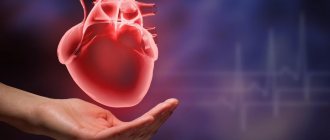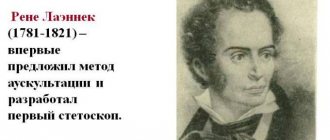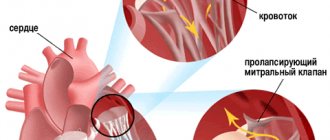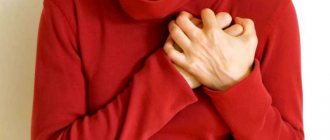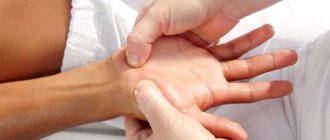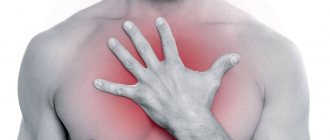Dextrocardia is a congenital anomaly of the cardiovascular system, a type of dystopia in which the heart is partially or completely displaced to the right and occupies a position mirror symmetrical to the normal one.
The parts of the heart and all large vessels are located in a similar way. In some cases, a mirror arrangement of some or all internal organs is revealed. According to statistics, dextrocardia occurs in approximately 0.01% of the population.
If the abnormal location is not accompanied by other pathologies, dextrocardia may not manifest itself and is discovered by chance, when visiting a doctor for other reasons.
A shift of the heart to the right can also be a consequence of pathological processes in the chest: pulmonary atelectasis, hydrothorax, tumor processes. With secondary mechanical displacement they speak of pathological dextraposition of the heart.
Kinds
Abnormal location of the heart can be caused by painful processes in neighboring organs. Such mechanical displacement is defined as secondary, and dextrocardia is considered pathological. It is possible with:
- pulmonary atelectasis (blockage of air outlet);
- pneumopleurothorax (collapse of airiness) of part or all of the lung due to rupture, injury, cavernous tuberculosis with the release of air into the pleural cavity;
- hydrothorax (fluid accumulation in the pericardial sac);
- the growth of a large tumor.
A true anomaly is of congenital origin.
Depending on the combination with other disturbed positions of internal organs, it is customary to distinguish:
- simple dextrocardia - the location of only the heart and blood vessels is mirrored;
- simultaneous dextroposition of the heart, parts of the digestive and respiratory organs;
- complete dextroposition of internal organs.
Why can pain occur on the right side opposite the heart?
In order to at least approximately determine the cause of pain on the right side opposite the heart, it is necessary to pay attention to the nature of the disturbing pain and the symptoms accompanying it. It will also be very important to communicate this same information to the attending physician, who must subsequently be contacted to establish an accurate diagnosis and treatment.
Pain in the right side of the chest can occur due to inflammatory processes in the lungs - bronchitis or pneumonia. In this case, it is usually spasmodic in nature and can intensify when coughing, sneezing, or turning over from one side to the other. Associated symptoms of such diseases are high fever, noise in the lungs, difficulty breathing, severe cough with the possible appearance of sputum. If there is no fever and the cough is persistent, this may also indicate the presence of a tumor in the lungs.
If a sharp pain in the chest began on the left side of the heart, and then began to radiate with a sharp impulse to the right, it may indicate a heart attack - myocardial infarction. With such pain, you must immediately call an ambulance, otherwise everything can end in death.
A dull, compressive pain throughout the chest, but radiating into a spasm in the right hypochondrium and squeezing the esophagus, occurs with pericarditis - damage to the serous membrane of the heart. This disease is especially difficult to diagnose, since its symptoms are similar to various cardiac disorders. Typically, the pain with this disease intensifies during a deep breath or in a lying position. Additional symptoms of pericarditis are swelling of the veins in the neck and swelling of the face.
Systematic paroxysmal pain often accompanies the most common type of coronary heart disease – angina pectoris. Usually a nitroglycerin tablet and complete rest in a horizontal position help get rid of it. If angina pectoris occurs, you should still consult a doctor, since it almost always recurs, and the pain can get worse each time.
Acute pain in the right side of the chest is a symptom of various liver diseases, such as cholecystitis and hepatitis. Unbearable stabbing pain can also occur with diseases of the gallbladder, in particular cholelithiasis. Usually in such cases, the patient can notice the whites of the eyes with a yellowish tint, the tongue with a white or yellow coating, and when pressing on the liver or bile duct, the pain on the right side opposite the heart may intensify.
Aching and nagging pain in the chest on the right can be caused by injury or bruise of the chest, excessive physical activity or intercostal neuralgia. As a rule, it gets worse when you inhale or cough.
How does the anomaly form?
Read more: Treatment of heart defects in children
It is believed that the fetal heart tube is formed already in the early stages of pregnancy (in the first 10 weeks). Its curvature to the right side leads to displacement, formation of the heart and great vessels on the right.
The fetus may simultaneously have other abnormalities of organs and systems associated with genetic mutations. The most studied mutations are the ZIC3Shh, Pitxz, HAND, and ACVR2 genes. Hereditary transmission of the anomaly is assumed.
The exact mechanism of dextrocardia has not been proven. In most cases, the heart functions normally. The child grows and develops without noticing the defect. Pediatricians observe such children at risk for the possibility of developing cardiac pathology.
Treatment
In most cases, dextrocardia has a favorable prognosis and does not require special treatment. Most often, the anomaly is discovered completely by accident during a medical examination or routine medical examination. Persons with this pathology lead a normal life, without any complications associated with their medical condition.
If dextrocardia is combined with a congenital heart defect, surgical treatment is performed. In advanced cases, surgical intervention is the only option to save the patient's life.
Conservative therapy is aimed at eliminating concomitant pathology. It alleviates the condition of patients and helps prepare the body for surgery.
Patients are prescribed:
- Drugs that support and strengthen the heart muscle - Trimetazidine, Panangin, Asparkam, Riboxin;
- Cardiac glycosides – “Strofanthin”, “Korglikon”;
- Diuretics – “Furasemide”, “Hypothiazide”, “Veroshpiron”;
- Hypotonics – “Enalapril”, “Captopril”, “Lisinopril”;
- Vitamin and mineral complexes;
- Plant adaptogens – Rhodiola rosea, Leuzea safflower, hawthorn;
- Nutritional supplements – omega-3, L-carnitine.
In order to prevent postoperative complications, antibacterial and immunostimulating therapy is carried out. Patients are usually prescribed broad-spectrum antibiotics from the group of cephalosporins, macrolides, and fluoroquinolones. To stimulate the immune system and maintain it at an optimal level, patients are prescribed drugs from the interferon group, Imunorix, Polyoxidonium, Bronchomunal.
Timely and correct treatment of patients avoids disability and death.
Is it a danger to human health?
In the absence of concomitant pathology, dextroposition itself does not pose a health hazard and does not shorten a person’s life span. However, during diagnostic studies and surgical intervention, the likelihood of medical errors increases significantly.
Acute pathology may be missed due to the unusual location of neighboring organs. In transplantology we have to take this into account and adapt to the abnormal course of arteries, veins, and nerve plexuses.
Practice shows that people with dextrocardia are more prone to contracting infectious diseases, especially those complicated by pathology of the lungs and bronchi.
What other defects is it most often combined with?
Rarely does an isolated “simple” anomaly occur. Dystopia (disorder of arrangement) also affects other organs. The most common combinations are found in childhood in the form of:
- tetralogy of Fallot - dextroposition of the aorta, pulmonary stenosis or complete occlusion, ventricular septal defect, significant hypertrophy of the right ventricle;
- reverse position of the main arteries;
- ventricular and atrial septal defect;
- pulmonary stenosis;
- valvular endocardial defects;
- double ventricular outlet;
- two- or three-chamber heart.
During transposition, the aorta emerges from the right ventricle, and the pulmonary artery emerges from the left.
A great danger to the life of a newborn is represented by “blue” defects, which appear in the first hours after birth. The vital activity of internal organs depends on the speed of surgical intervention to eliminate the defect.
With “white” defects, oxygen deficiency manifests itself in preschool age. Therefore, there is time for examination and preparation for surgery. The combination with pathology of the digestive and respiratory organs is expressed in:
- heterotaxic syndrome - there is no spleen or there are several underdeveloped spleens, practically non-functional;
- primary ciliary dyskinesia - the pathology consists of underdevelopment of the ciliated epithelium of internal organs, occurs in ¼ of patients with dextrocardia, is accompanied by multiple bronchiectasis, impaired anatomical structure of the bronchi, trachea, larynx, infertility in men due to low sperm motility;
- genetic mutations on the thirteenth pair of chromosomes (trisomy) - manifested by multiple malformations (Patau syndrome), defects of the nervous system (brain), eyes (microophthalmia, congenital cataracts), extra fingers, cleft palate and lip, changes in the urinary and genital organs, causes intrauterine fetal death, born children rarely live more than five years.
Why can pain occur on the right side opposite the heart?
In order to at least approximately determine the cause of pain on the right side opposite the heart, it is necessary to pay attention to the nature of the disturbing pain and the symptoms accompanying it. It will also be very important to communicate this same information to the attending physician, who must subsequently be contacted to establish an accurate diagnosis and treatment.
Pain in the right side of the chest can occur due to inflammatory processes in the lungs - bronchitis or pneumonia. In this case, it is usually spasmodic in nature and can intensify when coughing, sneezing, or turning over from one side to the other. Associated symptoms of such diseases are high fever, noise in the lungs, difficulty breathing, severe cough with the possible appearance of sputum. If there is no fever and the cough is persistent, this may also indicate the presence of a tumor in the lungs.
If a sharp pain in the chest began on the left side of the heart, and then began to radiate with a sharp impulse to the right, it may indicate a heart attack - myocardial infarction. With such pain, you must immediately call an ambulance, otherwise everything can end in death.
A dull, compressive pain throughout the chest, but radiating into a spasm in the right hypochondrium and squeezing the esophagus, occurs with pericarditis - damage to the serous membrane of the heart. This disease is especially difficult to diagnose, since its symptoms are similar to various cardiac disorders.
Typically, the pain with this disease intensifies during a deep breath or in a lying position. Additional symptoms of pericarditis are swelling of the veins in the neck and swelling of the face.
Systematic paroxysmal pain often accompanies the most common type of coronary heart disease – angina pectoris. Usually a nitroglycerin tablet and complete rest in a horizontal position help get rid of it.
If angina pectoris occurs, you should still consult a doctor, since it almost always recurs, and the pain can get worse each time.
Acute pain in the right side of the chest is a symptom of various liver diseases, such as cholecystitis and hepatitis. Unbearable stabbing pain can also occur with diseases of the gallbladder, in particular cholelithiasis. Usually in such cases, the patient can notice the whites of the eyes with a yellowish tint, the tongue with a white or yellow coating, and when pressing on the liver or bile duct, the pain on the right side opposite the heart may intensify.
Aching and nagging pain in the chest on the right can be caused by injury or bruise of the chest, excessive physical activity or intercostal neuralgia. As a rule, it gets worse when you inhale or cough.
Are there typical symptoms of dextrocardia?
Dextrocardia does not manifest itself with any characteristic symptoms. A person with such an anomaly can live a normal life and suffer from various diseases. Indirect signs can be the phenomena of other combined defects leading to acute heart failure in early childhood.
These include:
- bluish or pale skin, especially when screaming;
- severe weakness;
- dyspnea;
- prolonged jaundice of the sclera and skin in a newborn;
- detection of arrhythmias.
Such symptoms in childhood require careful examination, searching for causes and deciding on treatment. During the neonatal period, the risk of sudden death increases sharply.
Parents and doctors have to nurse the baby for a long time in a specialized department
Older children are registered with a cardiologist and are checked at least twice a year.
How is diagnosis carried out?
The initial diagnostic procedure for a newborn is an examination by a neonatologist on the first day of life. Listening at typical points may indicate dextroposition of the heart. It is important to determine the type of defect, combination with additional anomalies.
An ultrasound examination can be performed in the maternity ward. The technique allows you to accurately determine the location of the heart and blood vessels and other organs. It is important that it is not dangerous for early childhood and helps to establish the degree of dysfunction.
Magnetic resonance imaging is considered a more accurate method. Provides maximum information about the work and anatomical structure of organs.
An electrocardiogram (ECG) can be performed on a small child only after first using sedatives. Since any movements disrupt the recording of potentials, making it unsuitable for decoding.
The image of the cardiac shadow on the radiograph appears to be a mirror image of the norm
The X-ray technician's first impression is that the person is standing with his back to the screen. First, he is asked to stand in front without looking, and then the thought of dextroposition arises. For older children and adults, X-rays are taken in frontal and lateral projections, and a full ECG examination is performed.
Colitis in the chest on the right: the main causes of pain
When a patient at a doctor’s appointment says that he has a tingling sensation on the right or in the middle of his chest, the specialist must exclude a large list of diseases in order to establish the correct diagnosis.
The symptom may be due to pain in the throat, head, arms, or other parts of the body.
, scoliosis, diseases of the lungs, heart or gastrointestinal tract. The first thing you need to do is rule out other diseases and conduct a full diagnosis (MRI, X-ray, ECG, etc.). True neuralgia almost always occurs against the background of thoracic osteochondrosis.
How do patients with intercostal neuralgia complain:
- Lately, there has been a shooting pain in the left chest area, like the heart is grabbing;
- Electric shock pierces the whole body, nothing can be done, very strong pain and a feeling of fear;
- For no reason, unbearable pain appeared, like an electric shock; it was impossible to straighten up or take a breath;
- While sitting at work, I got a strong grip in my ribs and didn’t go away for a long time;
- I am suffering from aching pain in the area of the shoulder blade; I cannot take a full breath through my chest;
- Ribs hurt on the right/left, worsens with movement.
Before going to the doctor, you need to pay attention to the following points:
- how often you have pain and how long it lasts;
- what is its character: sharp, pressing, aching, arising when inhaling, etc.;
- at what time of day the pain usually occurs: during the day, at night, after physical activity, etc.;
- whether the occurrence of pain is associated with food intake, nervous tension or some other circumstances;
- How do you cope with pain: what position do you take, what medications do you use, what other methods do you use to eliminate it.
All this will help the doctor comprehensively assess your situation. Having contacted a cardiologist, you should not be surprised if he redirects you to a specialist of a different profile. After conducting a comprehensive examination, including an ECG, he may ask you to go for an ultrasound of the abdominal organs, do a computed tomography scan, or undergo x-ray diagnostics. All this is necessary to form a complete picture of your health.
In some cases, you can visit a doctor as planned, but sometimes emergency care is required. If you find yourself with at least one of the symptoms listed below, you need to immediately call an ambulance:
- a sharp and very severe attack of pain in the heart area;
- slowing or acceleration of the heartbeat during an attack of pain (the alarm should be sounded if the pulse jumped to 90 beats per second or more, as well as if it fell below 50 beats per second);
- a sharp increase or decrease in blood pressure;
- pain provokes shortness of breath; breathing becomes difficult, a feeling of panic appears;
- pain is accompanied by fever, dizziness, weakness, chills;
- increased pain when you cough or try to take a deep breath;
- there is sudden, severe weakness in the upper/lower limb or facial asymmetry occurs.
The rib cage is the largest skeletal part in the human body.
It contains several important organs.
Situations often occur when there is colitis in the chest on the right. There can be many reasons for this condition.
Most often, unpleasant sensations in the thoracic region of the human body appear as a result of injury during excessively intense physical exercise. If the load increases and the body is not prepared, the muscles located in the sternum begin to stretch.
This leads to painful sensations that begin to increase with deep breaths. Do not worry, since this situation is the body’s standard reaction to a large volume of lactic acid secreted. This can develop into microtrauma of the part of the muscles that strained the most.
The occurrence of such signs indicates that the study schedule is incorrect. This phenomenon can be eliminated by temporarily refusing to play sports. Moreover, you should start practicing again gradually.
Pain in the chest on the right side may also indicate a rib fracture. In such a situation, a sharp stabbing pain appears in the injured area, which intensifies during compression of the sternum or when the victim begins to cough.
The cause of severe pain on the right side of the chest can be bruises, which can be recognized by bruises that appear in this area.
You should know that severe bruises pose a danger to humans, as they can lead to lung rupture, which can be fatal. In this case, you need to consult a doctor.
Pain on the right side of the chest is a reason to see a doctor
Also, often pain in the chest indicates the development of an acute respiratory viral infection. In this case, discomfort appears in the place where the lesion is located.
Pain in this area may occur if the patient has recently been treated with medications.
The pain is aggravated if he lies in one position for a long time, observing bed rest. In such a situation, the muscles located between the ribs, weakened after illness, hurt.
When a person has pain in the right chest, where the heart is, such a symptom always becomes a cause for concern. Often, a pain syndrome of this kind indicates a mild or moderate disease, the type of which only a doctor can determine. For this reason, it is worth contacting a specialist to find out why the pain occurs and prevent the development of complications in time. The difficulty is that this condition can accompany a large list of diseases and confuse experienced doctors.
https://www.youtube.com/watch?v=H0Uuy2X8bu0
When it comes to why there is pain in the heart area on the right side, it is worth noting that this condition is due to various reasons. During the examination, the doctor strives to accurately determine the location of the pain, since the diagnosis directly depends on this.
In most cases, the cause of pain is precisely heart disease: angina pectoris, rheumatism, heart attack and other pathologies of varying degrees. Sometimes such a symptom indicates the presence of problems not related to the cardiovascular system, for example, diseases of the gastrointestinal tract or spine.
Important! If a person has pain in the area of the heart on the right side, the pain does not go away within an hour and is accompanied by additional symptoms, it is necessary to consult a doctor as soon as possible or call an ambulance at home.
Diseases affecting the musculoskeletal system, digestive, respiratory, immune, nervous and other systems can manifest themselves as such a sign. That is why it is important to tell the doctor in detail about the nature of the pain, intensity, accurately indicate the location and report additional symptoms, if any.
Aching pain can appear on the right, opposite the heart, radiate to the right arm, or completely affect the right side of the sternum. In this case, pain indicates:
- right-sided pneumonia;
- pleurisy or bronchitis;
- inflammation of the diaphragm;
- diseases of the liver, kidneys or gall bladder;
- inflammation of the pancreas;
- vegetative-vascular dystonia and many other diseases.
Not only older people with a number of diseases of both the heart and other organs can complain of tingling in the heart. Often the symptom worries young people, both female and male, teenagers and even children. It can be difficult to understand its origin only on the basis of a description of sensations, since not every patient is able to describe in detail and as accurately as possible exactly how it hurts or stings.
MORE ABOUT: Total bilirubin is increased, what does this mean in an adult, causes and symptoms
At the same time, a detailed questioning can lead the doctor to the cause of the complaints, and a simple examination can confirm it. In some cases, additional examinations are required to establish an accurate diagnosis, but if they are prescribed by a specialist, then there is still no need to panic. An in-depth examination does not always mean the presence of severe pathology.
In some cases, tingling in the heart area is not at all associated with the activity of its muscles, the level of blood supply, the presence or absence of inflammation and other pathological changes. The symptom can be functional in nature, have a psychogenic mechanism, or occur with pathology of other organs.
Elderly patients, when they experience stabbing sensations or pain in the heart, grab validol or nitroglycerin; young people, who have never encountered such symptoms, are lost and do not know where to run or what to do. In all cases of unexplained pain or tingling in the heart area, first of all, you should visit a doctor. You can start with a therapist who will refer you for an ECG and, if necessary, a cardiologist.
It is clear that a short-term tingling that lasts a few seconds and goes away on its own is not a reason to panic, but if the discomfort recurs, the tingling lasts for several minutes or more, and the usual medications in the form of validol, corvalol or nitroglycerin do not bring any effect, you should consult a doctor .
The reasons why the heart hurts are extremely varied and can lie both within the cardiovascular system and outside it. It does not always sting in the heart if there are structural lesions in it; in some cases, both the heart and other organs are not changed at all, and the first place as an etiological factor is a neurotic disorder, autonomic dysfunction, intensive growth.
The most common disorders in the heart that provoke stabbing pain are:
- Inflammatory processes in the heart muscle or pericardium (especially severe stabbing pain occurs with fibrinous pericarditis);
- Heart rhythm disorders - even a banal extrasystole, which is not always a sign of trouble, can cause tingling in the heart;
- Coronary heart disease - from angina pectoris to myocardial necrosis, when the heart beats with such intensity that the patient is unable to tolerate it;
- Dystrophic changes in the heart, cardiomyopathy;
- Heart valve defects.
Features of ECG
If the heart is reversed and the electrodes are placed normally, the recording will show waves in the opposite direction. The picture is not similar to any other disease; it extends to the enhanced and chest leads. Accompanied by a sharp decrease in voltage.
The ratio of the height and depth of the teeth in conclusion indicates the likelihood of dextroposition. To diagnose heart disease in a patient with such an abnormality, an ECG is taken by moving the red electrode to the left hand and the yellow electrode to the right.
Chest leads are removed on the left and right
It is taken into account that even when the heart is displaced, its parts (atria and ventricles) are located normally in relation to the median axis (the right sections are on the right, the left atrium and ventricle are on the left). The impulse travels through the atria from right to left, then goes down the interventricular septum into the ventricles.
The norm for dextrocardia will be high ventricular complexes in chest leads V1–V3 and low ones in V4–V6.
Liver and gastrointestinal diseases
If a patient experiences pain in the right side or in the right side of the chest, pathological processes occurring in the liver or gastrointestinal tract may manifest themselves in this way. With pathologies of the liver and bile ducts, the pain is dull and paroxysmal, can radiate to the right arm, is not associated with a change in body position and depends on food intake, for example, fried foods or fast food. The patient feels bitterness in the mouth, a characteristic yellow coating forms on the tongue, the urine becomes dark in color, and as the condition worsens, the whites of the eyes turn yellow.
Important! When there is pain near the heart on the right, people often strive to eliminate the unpleasant symptom as soon as possible, but it is worth remembering that self-administration of medications without the consent of a doctor can worsen the condition.
Only doctors can determine the exact cause of such conditions, who will confirm after examination whether it is liver damage, stones in the bile ducts or another disease.
Many gastrointestinal diseases: ulcers, gastritis, intestinal colic are accompanied by an unpleasant symptom on the right side of the heart or on the left. The patient may feel pain or a burning sensation on the right side of the chest or behind the sternum after eating certain foods. Pain of this kind requires immediate examination in a doctor's office.
Are there preventive measures?
There is no special prevention for dextrocardia. To prevent any defects in the child, the mother must be prepared before pregnancy begins. Therefore, obstetricians-gynecologists advise a woman to plan a pregnancy, get examined and treat chronic diseases. It can be difficult to leave work in hazardous working conditions, but this significantly reduces the risk of pathology in the fetus.
Care should be taken when referring future parents who have relatives with developmental anomalies to genetic counseling.
Cardiac dextroposition is not a disease, but an anatomical feature. If it is detected, you must follow the doctor's recommendations. In adulthood, the patient must be warned about the developmental defect if an examination or operation is prescribed. Life activities may be limited only by concomitant anomalies or diseases.
